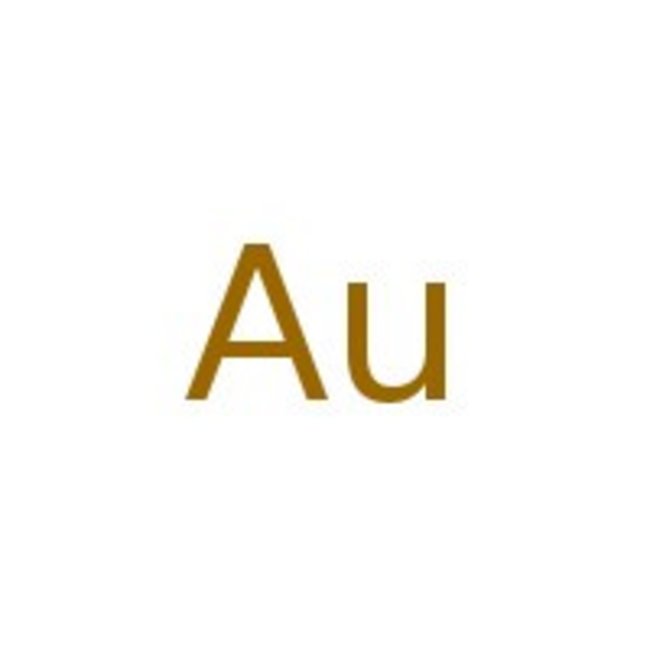Search Thermo Fisher Scientific
Thermo Scientific Chemicals
Gold nanoparticles, 20nm, supplied in 0.1 mg/ml sodium citrate with stabilizer, OD1, 524nm absorption, Thermo Scientific Chemicals化学物質識別子
CAS7440-57-5
IUPAC Namegold
Molecular FormulaAu
InChI KeyPCHJSUWPFVWCPO-UHFFFAOYSA-N
SMILES[Au]
さらに表示
仕様 スペックシート
スペックシート
FormLiquid
Concentration1.00-1.05 (OD)
Polydispersity Index≤0.2
Particle SizeMean Hydrodynamic Diameter: 28.0-32.0 nm
Particle SizeCore Size: 18.0-22.0 nm
さらに表示
Colloidal gold is an electron-dense, non-fading marker useful as a probe in electron microscopy, light microscopy and immunoblotting. It requires no additional processing for detection, but in some applications the signal can be enhanced by reaction with silver. It can be complexed with biomolecules by strong, non-covalent interactions. Particles less than 15 nm are most useful in transmission electron microscopy and for applications where access to the probe may be hindered by larger particles.
This Thermo Scientific Chemicals brand product was originally part of the Alfa Aesar product portfolio. Some documentation and label information may refer to the legacy brand. The original Alfa Aesar product / item code or SKU reference has not changed as a part of the brand transition to Thermo Scientific Chemicals.
Applications
Colloidal gold is an electron-dense, non-fading marker useful as a probe in electron microscopy, light microscopy and immunoblotting. It requires no additional processing for detection, but in some applications the signal can be enhanced by reaction with silver. It can be complexed with biomolecules by strong, non-covalent interactions. Particles less than 15 nm are most useful in transmission electron microscopy and for applications where access to the probe may be hindered by larger particles.
Solubility
Fully miscible in water. It is soluble in aqua regia, nitric acid and hydrochloric acid.
Notes
Particles per ml: 6.54E+11
Colloidal gold is an electron-dense, non-fading marker useful as a probe in electron microscopy, light microscopy and immunoblotting. It requires no additional processing for detection, but in some applications the signal can be enhanced by reaction with silver. It can be complexed with biomolecules by strong, non-covalent interactions. Particles less than 15 nm are most useful in transmission electron microscopy and for applications where access to the probe may be hindered by larger particles.
Solubility
Fully miscible in water. It is soluble in aqua regia, nitric acid and hydrochloric acid.
Notes
Particles per ml: 6.54E+11
RUO – Research Use Only
General References:
- J.F. Pierson; D. Wiederkehr; A. Billard. Reactive magnetron sputtering of copper, silver, and gold.Thin Solid Films.,2005,478 (1-2), 196-205.
- Mathias Brust, et al. Synthesis of thiol-derivatised gold nanoparticles in a two-phase Liquid-Liquid system.J. Chem. Soc., Chem. Commun.,1994,(7), 801-802.

